This Knowledge Base article provides suppliers with information on the Number Plate Registration Number. Including information on the different formats, font size & spacing, so you produce legal number plates.
Vehicle Registration Number
The most important element of a number plate is its registration number, since this is the vehicles identifier. And each registration number or mark is created using a standard format. Strict rules govern its size, font, colour and even its spacing so it remains visible even when moving.
The Format
Every registration number is made using a set Format as shown in the image below. This letter & number format was first introduced in September 2001 alongside 145d.
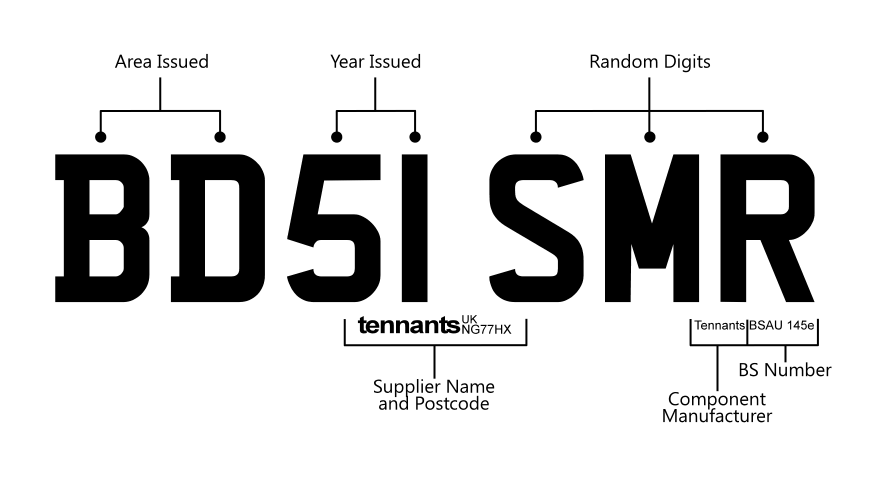
Consisting of three sections, it shows where and when your vehicle was registered. The first section uses letters to indicate the area it’s from. And the second section 2 numbers, for the date it was issued. At the end after the gap, it has three random letters. Underneath the registration, you can clearly see who made the number plate and the British Standard.
Note: Cherished or personal registration plates can have less than 7 digits.
Registration Size and Spacing
Because a number plate needs to be seen clearly, the regulations set out precise rules regarding the registration. Including its font type, size and the colour. Together with all the spaces, not only between digits but also to other elements. And these rules change based on the type of vehicle, whether it’s 2,3 or 4 wheel.
If you didn’t know, there is just one legal registration font – Charles Wright. This is both easy to read and photograph, even when the vehicles in motion. Only solid black digits are legal, which rules out any 3D, Hi-Line and Carbon font effects. But raised 3D Digits can be used, as long as they follow the rules.
Standard Registration (4 Wheel – single line)
A standard number plate shows the registration centred on a single line. This is the 4-wheel format, the most common type you will see on UK roads. And it is displayed on over 95% of all vehicles.
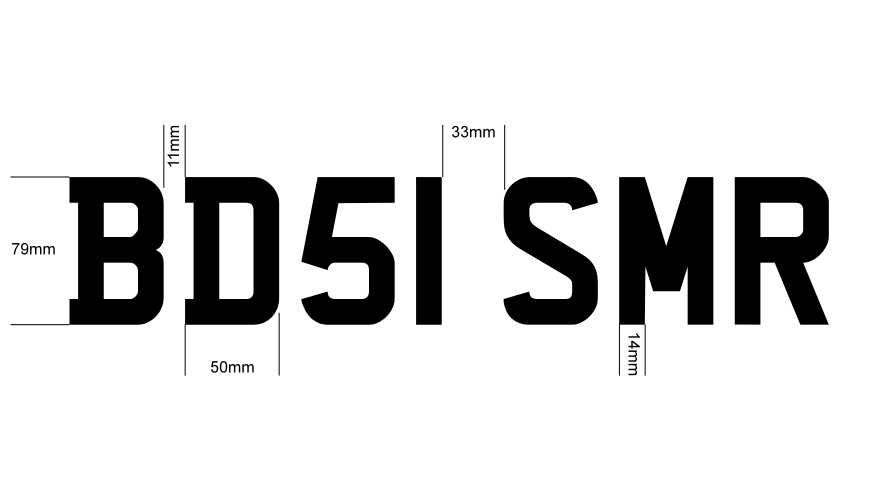
In brief, on a standard number plate the characters should be 79mm high and 50mm wide. Each digit should have a 14mm stroke width, and the space between them must be 11mm. Then there’s the gap between the year and random digits, which should be 33mm.
4 x 4 Registration (4 Wheel – two line)
4 by 4 registrations are still based on the same 4-wheel format as standard plates. But it splits the 3 random digits off onto a second line. Usually you see these on off-road capable vehicles, hence the name.
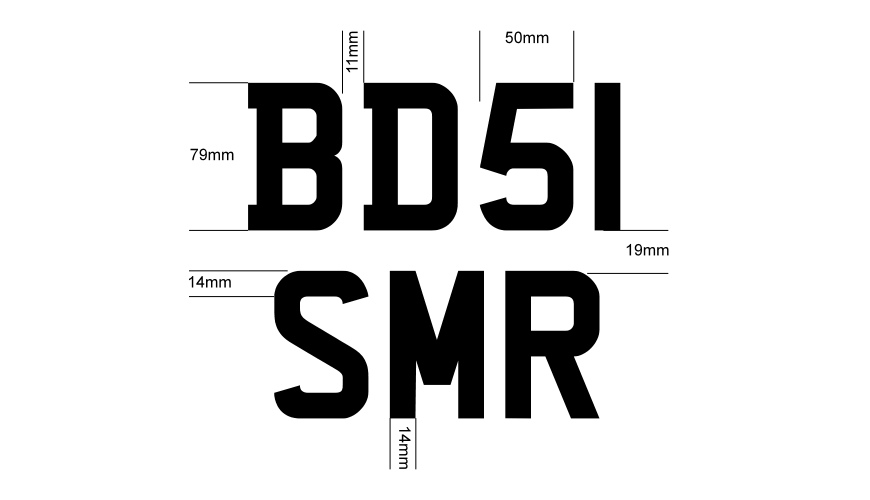
Here the registration has its random digits on a second line, placed 19mm below the year issued digits. This reduces the width of the plate, making it easier to mount on a vehicle. Especially if its carrying a spare wheel on the back. Additionally, the random digits gap can now be used to display a side badge – size permitting.
Motorcycle Registration (2&3 Wheel – two line)
Motorcycles have a smaller number plate than cars, so they’re easier to fit onto the bike. You can see below they also use a second line for the 3 random digits. In fact, this 2 & 3 wheel format also uses a smaller font size than standard.
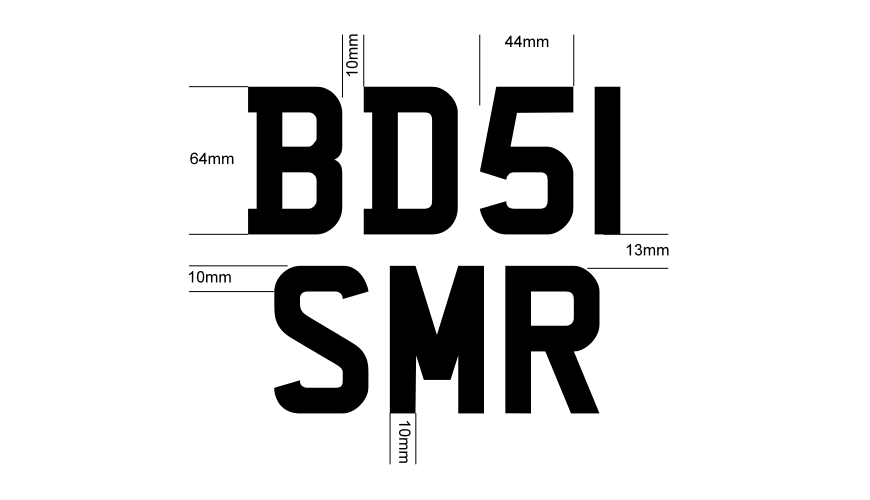
Most font dimensions change for Motorcycle and Tricycle registrations. Characters become 64mm high by 44mm wide. Each digit has a 10mm stroke width, and the space between them drops to 10mm. The 3 random digits are placed on their own line, 13mm below the year issued.
Exclusion Zones & Margins
The exclusion zone around the registration number is there to increase its readability. For this, multiple rules were set with BSAU145e and the spaces between elements clarified. And this spacing is applicable to all 3 types of plate, standard, 4×4 and motorcycle.
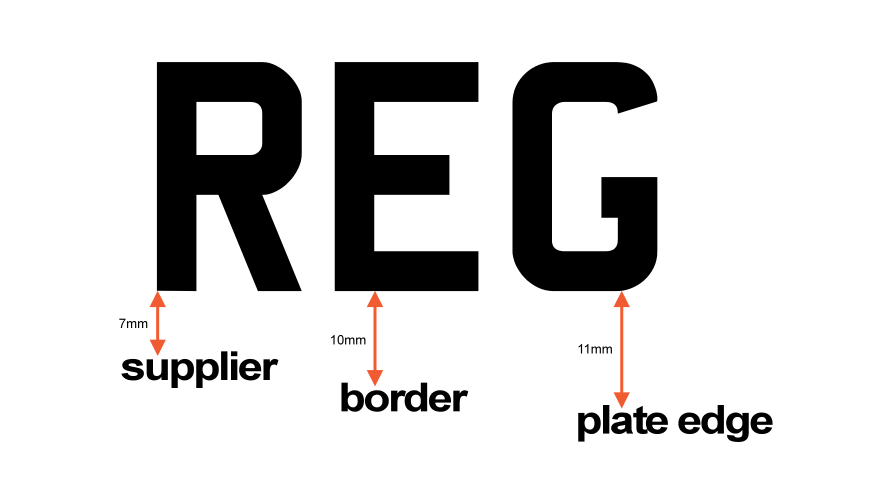
In brief, there is an exclusion zone all around the registration number of 7mm. Any border or coach-line must be at least 10mm away from it. Finally, there must be at least 11mm margin from the registration to the outer edge of the number plate. Together all this spacing increases the visibility of the registration, making it easier to see.
Further Information
This is a bite-sized article on the number plate registration number. If you want more detailed information on legality, check out the DVLA or BNMA Website. For customers questions on your plate production setup, just contact our sales or customer services team.

